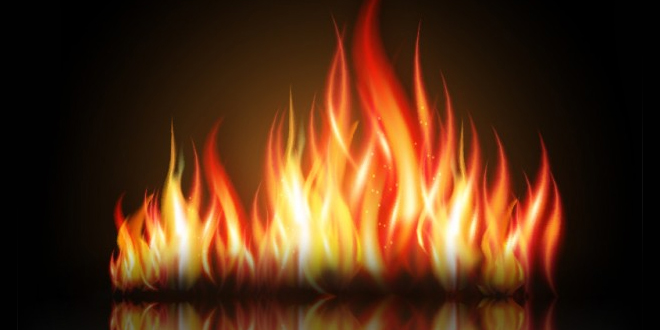Question: Compare LPG and wood as fuels.
Answer: Wood has traditionally been used as kitchen fuel and is still predominantly being used in rural areas. Burning of wood creates many air pollutants which can result in respiratory problems. Moreover, incomplete oxidation during burning of wood creates carbon monoxide which is a poisonous gas. LPG is much better because it burns without giving smoke. It produces lesser amount of air pollutants. Complete oxidation during burning of LPG does not lead to carbon monoxide production.
Question: Give reasons:
Water is not used to control fires involving electrical equipment.
Answer: Pure water is a bad conductor of electricity but normal water contains many salts and hence is a good conductor of electricity. Trying to douse fires; involving electrical equipment; with water can result in electric shock. Due to this, water is not used to control fires involving electrical equipment.
LPG is a better domestic fuel than wood.
Answer: LPG is a better domestic fuel than wood because of several reasons. Unlike wood, LPG burns without smoke. This makes the life of housewives more comfortable and they do not have to worry about blackening of pots and pans. Moreover, use of LPG as domestic fuel also rules out the chances of getting respiratory disorders which may happen when someone uses wood as kitchen fuel. Storage and transportation of LPG is easier compared to that of wood.
Paper by itself catches fire easily whereas a piece of paper wrapped around an aluminium pipe does not.
Answer: The ignition temperature of paper is lower compared to that of aluminium. When paper is wrapped around an aluminium pipe; the ignition temperature increases. That is why paper itself catches fire easily whereas a piece of paper wrapped around an aluminium pipe does not.
Question: Explain how CO2 is able to control fires.
Answer: Carbon dioxide is heavier than oxygen. Due to this, carbon dioxide forms a blanket around the burning material and makes a barrier between the burning material and oxygen. As oxygen supply is cutoff, it helps in extinguishing the fire.
Question: In an experiment 4.5 kg of a fuel was completely burnt. The heat produced was measured to be 180,000 kJ. Calculate the calorific value of the fuel.
Answer: Total mass of fuel = 4.5 kg
Heat produced by burning the given mass of fuel = 180,000 kJ.
We know that calorific value of fuel
Heat produced in kJ ÷ Total mass burnt
= 180,000 kJ ÷ 4.5 kg = 40,000 kJ/kg
Hence, the calorific value of the given fuel = 40,000 kJ/kg
Question: Can the process of rusting be called combustion? Discuss.
Answer: Although the process of rusting also involves oxidation but it cannot be termed as combustion. The reason for this is that combustion is defined as a process in which oxidation is accompanied by heat, and heat is not produced during rusting.
Question: Abida and Ramesh were doing an experiment in which water was to be heated in a beaker. Abida kept the beaker near the wick in the yellow part of the candle flame. Ramesh kept the beaker in the outermost part of the flame. Whose water will get heated in a shorter time?
Answer: Since Abida has kept the beaker in the luminous zone of the flame, the beaker will take more time to get heated. On the other hand, Ramesh has kept the beaker in the non-luminous zone of the flame so his beaker will be heated in shorter time.
 Class Notes NCERT Solutions for CBSE Students
Class Notes NCERT Solutions for CBSE Students



Hi! I’m Gauri Bharti of class 8th I have problems in some questions but now I clearly answered the questions. Tnq u!